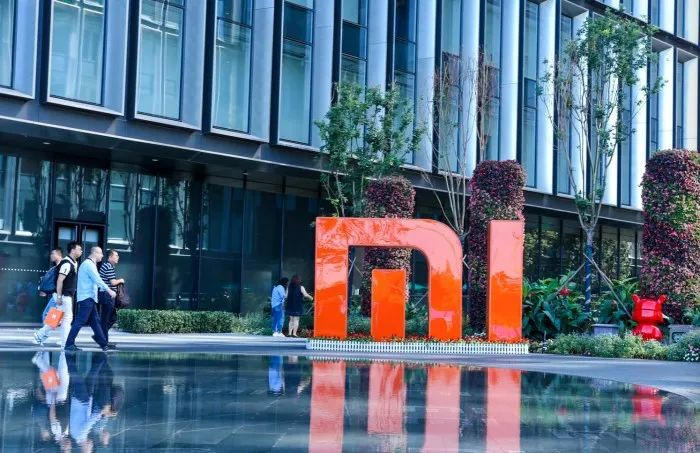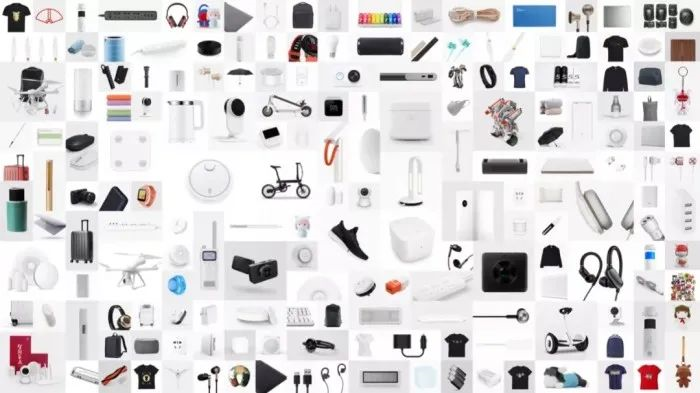Analysis of Xiaomi’s Smart Cockpit
It has been over two months since Lei Jun, the founder of Xiaomi, proclaimed he would “gamble his entire reputation and make it his final entrepreneurial endeavor” to launch Xiaomi’s electric car.
When discussing the topic of Xiaomi’s car with some industry peers, a shared perspective is brought up consistently – the smart cockpit will likely be the shining star among Xiaomi’s numerous advantages. This sparked some thought and analysis, which is the reason for this article.
We believe that among the many advantages of Xiaomi’s electric car, the smart cockpit stands out the most.
But what exactly sets the smart cockpit of Xiaomi’s electric car apart?
Before delving into the smart cockpit of Xiaomi’s electric car, let us first ask ourselves: what is a smart cockpit?
Regarding the definition of a smart connected vehicle, we refer to a passage from the Electric Vehicle Engineering Handbook, edited by Academician Sun Fengchun from the Chinese Academy of Engineering:
“A smart connected vehicle refers to a new generation of cars that can complete information exchanges with humans, cars, roads and the internet through advanced in-car sensors, controllers, actuators, and other devices, by integrating modern communication and network technologies. It has functions such as complex environment perception, intelligent decision-making, and collaborative control, and can achieve safe, efficient, comfortable, energy-saving driving, and eventually replace humans as the controller of new generation vehicles.”
Of all the definitions, the most important phrase here is “information exchange.” If environmental information and a driver’s intent can be fully exchanged with the vehicle, it would mean true autonomous driving. As such, the “information exchange” is also a significant aspect of the smart cockpit.
Whether it is feature phones becoming smartphones or traditional cockpits becoming smart cockpits, the underlying goal is to significantly improve information exchange efficiency.
Improvements in multi-mode interaction and multi-screen linkage, among other interactive methods, make information exchange between humans and vehicles more convenient and precise.
From 3G (audio-visual and mobile internet) to 4G (high-definition video and game services), and now to 5G, the development of networks not only improves transmission speed, but also increases the diversity of ways in which information can be exchanged across multiple channels.
For example:
Voice recognition, gesture recognition, and composite commands eliminate multiple interaction steps and levels, improving the efficiency of information transmission and enhancing convenience.
Multi-screen brings a variety of information displays, allowing drivers and passengers to obtain the information they need in different scenarios, making driving and riding experiences more enjoyable.Here we define the intelligent cockpit as “a comfortable, convenient, and safe driving space created by significantly improving the efficiency of information exchange through the precondition of electronicization and intelligence.”
What are Xiaomi’s advantages?
We believe that Xiaomi’s core advantages in making cars are:
First, Xiaomi has been operating in the intelligent smartphone and ecology business for many years, with mature marketing and customer acquisition capabilities, as well as mature channel control capabilities.
Second, with strong financial reserves, it has the ability to continuously invest in research and development.
Third, Xiaomi has been operating in the AIoT ecology for many years, which gives it a relatively deeper understanding of user needs.

The third point is what we believe distinguishes Xiaomi’s intelligent cockpit from those of other car manufacturers.
We can see that when we open the Xiaomi e-commerce app, it has a complete range of goods that almost covers all aspects of life:
From mobile phones, watches, bracelets, and headphones that we carry with us, to home appliances of all sizes, such as TVs, computers, and kitchen and bathroom appliances. There are also categories such as smart security and smart control.
Moreover, the vast majority of these devices have already been connected to Xiaomi’s ecological network. Coupled with Xiaomi’s AI capabilities, it means that these devices can achieve a high degree of intelligent interconnection, and the efficiency of “information exchange” between humans and devices, as well as devices and devices, is greatly improved.
When it comes to us, what can these bring us? Let’s take one or two simple scenarios as examples.
Morning:
The dawn of the forest slowly spreads through the Xiao AI speaker, and the curtains slowly open, welcoming the first ray of morning sun. The aroma of the coffee machine has filled the entire room, reminding you that the day should start with a decent breakfast.
When the last person in the family leaves and conveniently closes the anti-theft door with the smart lock, the air conditioning automatically turns off, and the sweeping robot slowly drives out of the charging station to clean the floor.
Evening:
As you push open the door, the lights in the hallway automatically turn on, the curtains in the house slowly close, and the temperature and humidity inside the room have already reached a comfortable state.
As you sit on the sofa, the TV shows your favorite channel and the light is at a comfortable color temperature. No matter how noisy the outside world is, you can immerse yourself in comfort as soon as you step into the room.
All of these can be brought to users by a mature IoT ecosystem.

How can Xiaomi’s advantages be applied to the cockpit?”Connected Cars and Homes” has been a concept proposed for a few years now. The idea is to activate home air conditioning from the car, make video calls with family members through home devices, check the status of the car from home and so on.
However, unfortunately, no car manufacturer has fully implemented “Connected Cars and Homes” yet. There are two main obstacles:
- Information exchange barriers between automobiles and home platforms
To meet the needs of different users, car manufacturers need to link up with various smart home platforms, such as JD.com Home, Baidu Home, and Xiaomi Home. The addition of multiple platforms will undoubtedly result in tradeoffs in terms of functionality and interaction experience, greatly reducing user availability.
- Information exchange barriers between home platforms and devices
Most of the home appliances in users’ homes are not produced by the same brand and cannot be linked to the internet. Even for devices that can be connected to the internet, the platforms they can interface with are different.
A few years ago, Xiaomi claimed to have become one of the world’s largest consumer IoT platforms. Based on this assumption, Xiaomi cars can perfectly solve these two problems:
On the one hand, for users, cars are a huge commodity second only to houses. Compared to a car, thousands of yuan for home appliances are not expensive. In order to achieve a closed ecosystem experience, purchasing corresponding home appliances after buying a car will have a relatively lower threshold of consumer psychology.
On the other hand, we believe that the owners of Xiaomi cars are likely to already be users of Xiaomi’s smart products before purchasing the car. This means that achieving a seamless connection between people, cars, and homes will be easily achievable.
We believe that Xiaomi cars have the most potential to be the first brand to bring “Connected Cars and Homes” to fruition.
In addition to “Connected Cars and Homes”, the cabin of Xiaomi cars can also host smart devices, such as Bluetooth headphones, K song microphones, cameras, smartwatches and camera monitors.
Taking Xiaomi’s K song microphone as an example, traditional and new car manufacturers need to find microphone vendors and K song software suppliers to cooperate to achieve this function. Microphones are expensive themselves, and fees must also be paid to the K song software. However, Xiaomi cars can solve this problem even before the car is manufactured.
Xiaomi’s handheld camera can be used as an on-board Vlog camera; Xiaomi’s smartwatch can be used to monitor the driver’s health status; and the Xiaomi camera can be used for long-distance vehicle monitoring.
In addition, we noticed that Xiaomi has a magical Xiaomi Touch & Connect tag, which has now released version two. The product’s detailed page is described as follows:
“Write relevant information about Little love speakers into the Xiaomi Touch & Connect tag. As long as you touch it with your phone, you can transfer the music you are playing on your phone to the Little love speaker, and touch it again to relay it back to your phone for continued playback.”
“Write relevant information about Xiaomi TV into the Xiaomi Touch & Connect tag. As long as you touch it with your phone, you can transfer the video you are playing on your phone to the TV for continued playback.”Translate the following Chinese Markdown text to English Markdown text, in a professional way, preserving the HTML tags inside Markdown, outputting the result only. In addition, there is “tap,” “start wake-up mode,” “leave home mode,” “return home mode,” “watch mode,” “good night mode,” etc.
If Xiaomi’s tap technology is transplanted to cars, you can tap your phone to transmit the planned navigation route to the car’s system, tap your phone to play music on the car’s speakers, tap your phone to continue playing videos on the car’s display screen, and so on.

In short, with the smart interconnectivity of the Xiaomi ecosystem, and the convenience and efficiency of “information exchange,” all kinds of unprecedented fun and experiences can be created inside the smart cabin.
Above all, these are some of our speculations about Xiaomi’s cars. What kind of car will Lei Jun, with his tragic but resolute management style, bring to young people? We wait and see.
When Xiaomi’s cars successfully make a thrilling leap in the market, it will once again mark an AIoT breakthrough for the Xiaomi ecosystem. At that time, I believe one slogan will be particularly suitable for Xiaomi’s cars:
“Xiaomi’s ecosystem captures every detail of your life.”
This article is a translation by ChatGPT of a Chinese report from 42HOW. If you have any questions about it, please email bd@42how.com.
